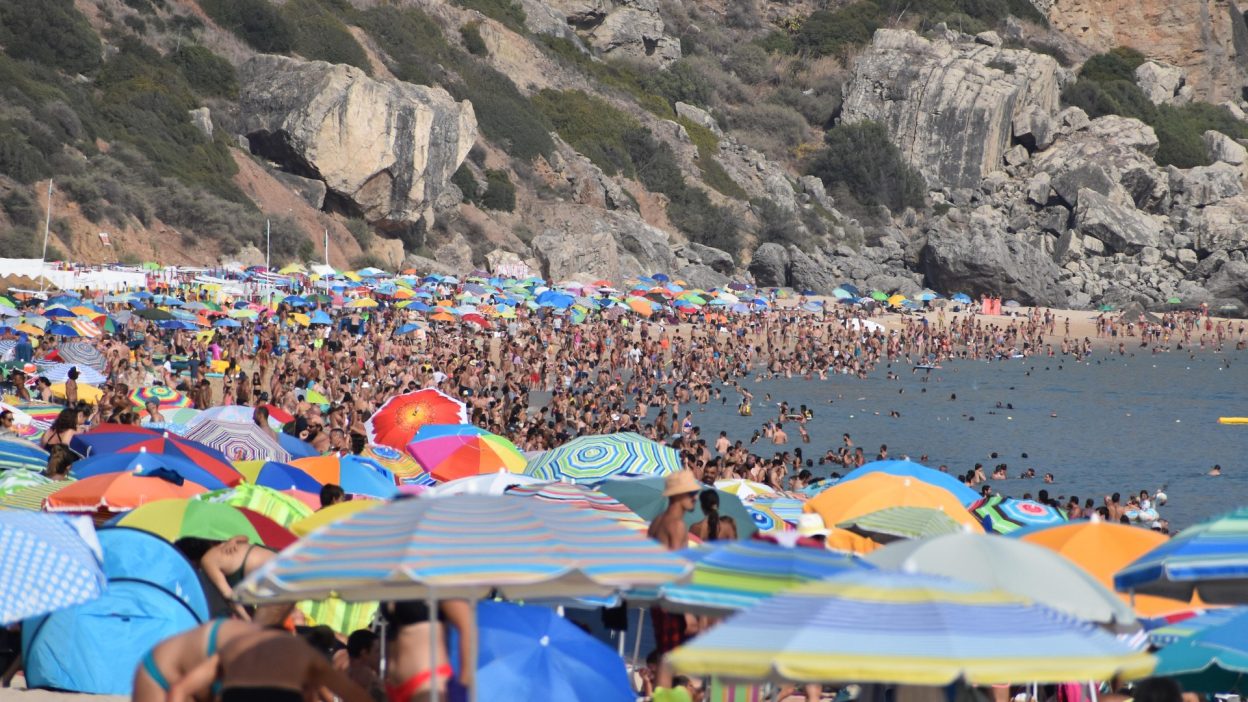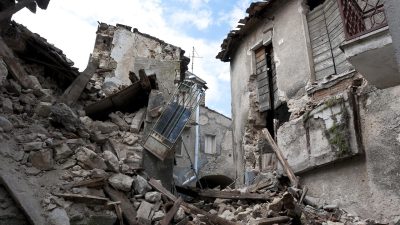The Year Europe Turned into a Furnace
A Scorching Crisis: How the 2019 Heatwave Shattered Records Across Europe
The summer of 2019 will be remembered as one of the most extreme in European history. That year, the continent endured an unrelenting heatwave, with temperatures soaring past 45°C (113°F) in several regions. Countries such as France, Germany, Spain, the Netherlands, and the United Kingdom faced record-breaking heat, pushing millions to their limits.
What made this heatwave particularly alarming was its intensity, duration, and widespread impact. It was not just a single-day heat spike—the extreme temperatures lasted for weeks, leaving residents desperate for relief. In France, the town of Vérargues recorded a staggering 46°C (114.8°F), making it the hottest temperature ever registered in the country.
Climate scientists were quick to highlight the role of global warming in amplifying this disaster. Human-driven climate change had created the conditions for such extreme events, making them more frequent and severe. Yet, despite mounting evidence, governments were shockingly unprepared, leaving vulnerable populations struggling to survive.
The Silent Killer: How the Heatwave Claimed Thousands of Lives Without Warning
Unlike natural disasters that cause immediate destruction, heatwaves are silent but deadly. Their impact is not always visually dramatic, yet they claim thousands of lives—often without people realising they are in danger.
During the 2019 European heatwave, hospitals saw a surge in emergency cases linked to heat exhaustion, dehydration, and cardiovascular failures. Many of these victims were elderly individuals, young children, and those with pre-existing health conditions. The heat particularly affected urban populations, where concrete structures trapped heat, turning cities into giant ovens.
One of the most alarming aspects of the heatwave was the lack of awareness. Many individuals underestimated the risk, assuming that hot weather was merely uncomfortable, not life-threatening. With governments failing to launch proper awareness campaigns, the heatwave claimed thousands of lives in silence—turning homes, workplaces, and public spaces into death traps for the vulnerable.
A Tragic Toll: The Real Number of Deaths and Injuries
- Official figures vs. actual deaths
Governments initially reported around 2,500 heat-related deaths, but independent studies suggested that the true toll was likely much higher. Many deaths were misclassified, recorded as heart attacks, strokes, or respiratory failures rather than heat-related fatalities. - France: The worst-hit nation
France saw the highest death toll, with over 1,500 fatalities. Paris, in particular, struggled as hospitals became overwhelmed. Authorities drew chilling comparisons with the 2003 heatwave, which had resulted in nearly 15,000 deaths. - Germany, Spain, and the Netherlands
Germany recorded more than 850 deaths, while Spain and the Netherlands reported over 400 and 300 fatalities, respectively. The heat placed an immense strain on emergency services, with ambulance response times increasing as calls flooded in.
The Domino Effect: How the Heatwave Triggered Wildfires, Droughts, and Infrastructure Failures
The extreme temperatures of 2019 led to widespread destruction, impacting multiple sectors across Europe.
Massive wildfires erupted in Spain, Portugal, and France, reducing thousands of hectares of forest to ashes. The dry conditions provided ideal fuel for the flames, with firefighters struggling to contain the infernos. Homes were destroyed, wildlife perished, and entire landscapes were transformed into barren wastelands.
At the same time, severe droughts crippled agriculture, devastating wheat, maize, and fruit crops. Farmers lost millions in revenue, as scorched lands failed to produce. Water shortages also became widespread, further aggravating the crisis.
Power grids collapsed under pressure, unable to handle the surge in air conditioning usage. Rolling blackouts left millions without electricity, forcing people to endure the heat without relief. Transport systems suffered as well, with railway tracks warping under extreme heat, causing delays and cancellations across major networks.
Government Negligence: Why Europe Failed to Protect Its People
The 2019 heatwave was not an unexpected event—scientists had warned for years that climate change was making extreme heat more common. Yet, when the crisis struck, most European governments were caught unprepared.
Despite previous deadly heatwaves, there were no large-scale emergency response plans in place. Cooling centres were scarce, public awareness campaigns were minimal, and many cities lacked the infrastructure to deal with extreme temperatures.
Experts argue that had governments acted sooner, many deaths could have been prevented. Simple measures—such as emergency water distribution, heat-resistant building designs, and better healthcare preparedness—could have saved countless lives. Instead, the lack of action left people to face the deadly heat alone.
A Financial Disaster: How the 2019 Heatwave Cost Billions
The economic consequences of the heatwave were catastrophic. The cost of damages ran into billions of euros, affecting multiple sectors:
- Agriculture suffered immense losses, as crops failed under extreme temperatures. Farmers in Spain, France, and Italy reported historic declines in wheat and fruit production.
- Public infrastructure sustained severe damage, with roads melting, train tracks bending, and power stations failing under increased demand.
- Tourism took a hit, as extreme heat discouraged travel, with many tourists cancelling their holidays in regions experiencing severe temperatures.
Insurance companies saw a massive spike in claims for heatwave-related damages, further straining financial resources. The long-term economic impact of the heatwave was felt for months, with businesses and governments struggling to recover.
The Cities That Suffered the Worst
- Paris: A suffocating metropolis
France’s capital recorded 42.6°C, a historic high that turned the city into an unbearable furnace. Public water fountains overflowed with residents trying to cool off, but the relief was short-lived. - Berlin: A city paralysed by heat
Germany’s capital saw its public transport network fail, with trains cancelled due to overheated tracks. Hospitals struggled to manage heatstroke cases, and many residents were left helpless. - Madrid: A city without escape
Spain’s capital suffered from multiple power cuts, leaving entire neighbourhoods without electricity for hours. The heatwave left many elderly residents trapped indoors with no means of cooling down.
The Ignored Warnings: Why Europe Is Still Not Ready for the Next Heatwave
Despite the devastation of 2019, most European countries have failed to take serious action. Climate experts continue to sound the alarm, but progress on heat-resistant infrastructure, cooling solutions, and emergency preparedness remains slow.
Many homes in northern Europe still lack air conditioning, and the cost of cooling remains high. As climate change continues to push global temperatures higher, future heatwaves could be even more destructive.
A Glimpse of the Future: The 2019 Heatwave Was Just the Beginning
The 2019 heatwave was not a one-time event—it was a warning of what is to come. If carbon emissions continue unchecked, extreme heat events will become even more frequent and deadly.
The choice is clear: act now to curb climate change, or face even more extreme summers. Europe—and the world—must take immediate steps to prepare for the next inevitable disaster.
FAQs
1. What was the highest temperature recorded during the 2019 European heatwave?
The highest temperature recorded was 46°C (114.8°F) in France, setting a new national record.
2. How many people died during the heatwave?
Official reports list over 2,500 deaths, but experts believe the real number was significantly higher.
3. Which countries were affected the most?
France, Germany, Spain, the Netherlands, and the UK experienced the worst conditions.
4. What caused the heatwave?
The heatwave was exacerbated by climate change, shifting jet streams, and high atmospheric pressure systems.5. Can another heatwave like this happen again?
Yes, scientists warn that more frequent and severe heatwaves are expected due to global warming.




